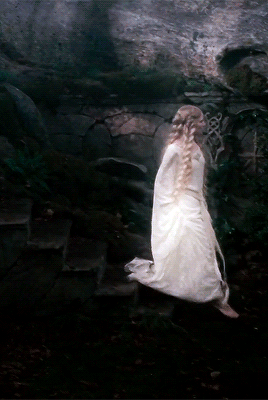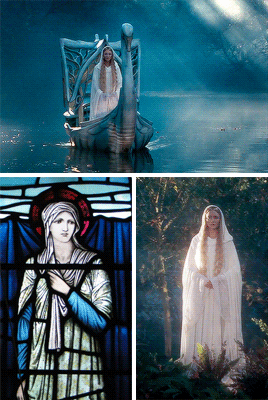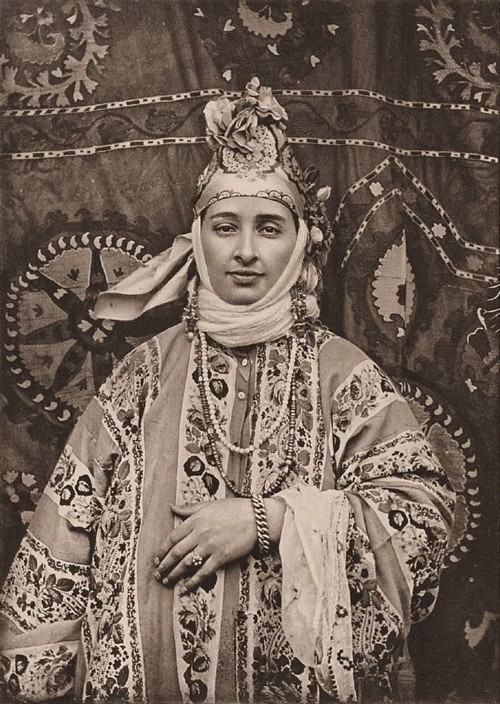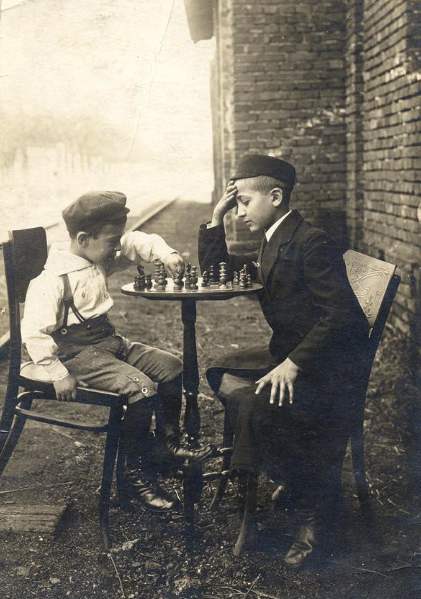1910s - Tumblr Posts






Galadriel
1. The Mirror of Venus by Edward Coley Burne-Jones 2. Mary Virgin stained glass window St Matthew’s church Butterleigh, Devon after sir Edward Coley Burne-Jones, by William H Chadwick, by Morris & Co., by George Frederick Titcomb (1928) 3. King Arthur Asks the Lady of the Lake for the Sword Excalibur, illustration by Walter Crane (1911) 4. The Valkyrie’s Vigil by Edward Robert Hughes (before 1915)

‘sacrifice’ (details) - leonardo bistolfi (1911)

The Sacrifice. 1911. Leonardo Bistolfi. Italian 1859-1933. marble. Altare della Patria. Rome. http://hadrian6.tumblr.com

franz kafka and writer/doctor ernst weiss at the baltic-sea in the summer of 1914.

Klyuev and Yesenin, Petrograd, Russian Empire, 1915.
The two poets had a complicated relationship, although Yesenin considered Klyuev his teacher and senior comrade, but after he achieved fame and success, their paths diverged.

A Family portrait during the Spanish Flu, 1918 ♡


Tefillin bag, Romania, circa 1915, beads and velvet
Made by a professional Jewish bead-worker who during WWI, deserted the Austro-Hungarian army, was caught and sent to a prison camp. A Jewish guard became his protector. At the end of the war, the bead-worker made this bag as a token of appreciation to the Jewish soldier.

Old postcard of the Great Synagogue in Dubno, Ukraine.
Between 1910 and 1914.

Jewish man selling greens at the market in Thessaloniki, Greece, 1913

Jewish woman from Samarkand, Uzbekistan, 1910

Hasidic boys playing chess in Łowicz, Poland, 1919. (YIVO)


Jewish women from Thessaloniki, Greece (Ottoman Empire), 1913
Literal-Inktober 4: Redesign.


Posting in 05/Octob/2024 because i was too much tired.
have you seen this video @fuckyeahchinesefashion posted? /post/663223541535211520/history-of-chinese-school-uniform-by-朵朵花林 i love how all the uniforms look and the changes are so fascinating! i thought you would be especially interested in the early 20th century ones :)
Link to the video
I love the concept of an “evolution of school uniforms” video but unfortunately the uniforms presented are quite stereotypical and incorrect when it comes to construction. I guess this is sort of inevitable with these “one hundred years of” videos :/ I’ll break down each of these looks in some detail.
1910s

This one is taken from a famous photograph of Lin Huiyin and her cousins from 1916 so theoretically not much could go wrong, yet they somehow managed to misunderstand the proportions. The robe/shirt in the photograph is longer than that in the video, and the cut is looser and not as tight. I can’t see it clearly in the video but I think their shirt was taken in at the waist with darts, which was not a thing that happened in the 1910s. In the 1910s, flat chest was still the beauty ideal, so busty women would wear breast binders to flatten their chest. This wasn’t even necessary for schoolgirls who haven’t hit puberty yet, so it would be even more sensible to give them flat shirts. Overall the fit should be more roomy and less skin tight. Apart from that, the standing collar is a bit too loose around her neck.
I’m always made uncomfortable by the text in this kind of posts/videos, they love to connect fashion to the grand narrative about national salvation which people back then didn’t remotely think about when designing new clothes. Most of the cultural meanings attached to Republican era fashion were added after the fact.

Source
Lin Huiyin (far right) and co.
1920s

The 1920s one is especially bad because it’s literally a cheap stereotypical “May Fourth uniform” Halloween costume. The construction is not great; the missing neck area binding, the not at all common decorative buttons, the use of darts, the terrible loose fit of the collar, the lack of curve in the 大襟 dajin (front closure) etc., etc.. What I never understood about this costume is the fact that the black binding they always use just accentuates the lack of neck area binding and makes the giant loose collar look like a pimple on an otherwise smooth shirt. The same problem with the waist darts persists, 1920s clothes were still flat at the chest. Also, 1920s school uniforms were not necessarily blue shirt + black skirt, I don’t know where that perception came from. If you look at photographs or drawings from the period you don’t see a lot of plain blue shirts. Black skirts were pretty common, but the late 20s ones that went with the shirt with flared sleeves often had floral trims and were not strictly plain like it says in the text.

Taobao search result for “May Fourth costume”.

The reference image they showed was the painting 五四运动 “May Fourth Movement” by 周令钊 Zhou Lingzhao from 1951, meaning it wasn’t an original artwork from the 20s and thus not reliable. The art style does not match that of the late 1910s/early 20s, the emphasis on the two women’s breasts was the opposite of the beauty ideal of the 20s, and the inclusion of a woman wearing cheongsam for an image supposed to represent the late 10s/early 20s (this style of cheongsam was popularized ca. 1927) betrays the fact that the artist possessed only very basic knowledge of fashion history. These stereotypical “May Fourth uniform” shirts likely originated in the 50s or 60s, because the use of no neck area binding, the straight instead of angled dajin (which is important but often overlooked), fabric, binding and button choices all resemble 50s Hong Kong style cheongsam more than they do 20s clothing.

Source
Really reminds me of this 50s cheongsam worn by Li Lihua somehow, though this is infinitely better tailored.

Source
1919 fashion. You can see how flat their chests are.

Source
1920 fashion (this is to show you the robe and collar).

Source
From 1922, this is to show you the skirt.
As to black skirts, they did not become really popular until around 1926. For reference, the May Fourth movement happened in 1919.

Source
Ensemble ca. 1927.
If you insist that the “May Fourth costume” is accurate and looks identical to 20s clothing, maybe, uh, get your eyes checked please.
1930s

The 1930s one is, again, stereotypical and not very well constructed. The blue color is actually appropriate this time because blue Indanthrene fabrics were more popular in this decade. The cheongsam construction, especially the collar construction, is questionable. This is quite a common problem for modern “Republican era style” cheongsam construction: the hole for the collar is too big, resulting in the buttons being closer to your collarbones than the bottom of your neck and the collar appearing lower than it should. This issue is exacerbated by the weird placement of the buttons: two placed at the very bottom and sitting close to each other. This was not done at any time in the 30s, or any time in the Republican era, really. The collar design itself doesn’t look like anything popular in the 30s either, it’s too rectangular and tall to be late 30s, but too low and saggy for early 30s. The sleeve length is very popular among costume designers and Taobao shops but very rare in the 1930s.

The reference image they used looks like it’s from the 40s, (I love how at the end they named all the reference images except the questionable ones) leading to the incorrect use of a 1940s hairstyle as well. On a tangent here, the text is again slightly cringy, saying something like “the modernized cheongsam brought women into the era of dressing for themselves”. This has two incorrect and problematic implications: 1) that women did not dress for themselves prior to the 1930s 2) women needed to have freedom of dress “delivered” to them through a specific garment, rather than simply a change of mindset.

Source
Early 30s Indanthrene cheongsam (Indanthrene came in many shades of blue, purple and red).

Source
1930s students in floor length cheongsam. See how well fitted their collars are!! And they all have either straight bobs or side parted short finger waves, not pinned back brush out curls.

Source
1940s cheongsam, as featured in the reference image.
1940s

This one is fairly ok, though it’s specifically sportswear and probably wouldn’t be worn inside classrooms or for non sports activities.
1950s

This one is a wild ride so brace yourselves. She got the red scarf and braided hair correct, I’ll give her that, but the rest of the outfit... I’ve never seen a single photo of a schoolgirl who dressed like this, let’s just put it this way. The common outfit for urban schoolgirls and students in the 1950s was the combination of a white blouse and a swing skirt/pair of wide legged pants, often with the blouse tucked into the skirt/pants. Pinafores could also be worn instead of skirts. For country girls, aoku outfits were more common (they always have been throughout the 20th century), though they certainly did not look like what is shown in the video. The most common shoes were black mary jane flats with white bobby socks underneath, as well as other Western construction shoes popular in the 1950s. To be fair, children and teenagers’ clothing did not change much from the 1930s to the 1950s at all, they remained cute and frilly Western construction clothes. She should look more like Audrey Hepburn in Roman Holiday than whatever this is supposed to be. The color scheme and fabrics are really a choice...

Source
Artwork from 1963 but the 50s was similar; children’s clothing didn’t change much from the 30s to the 70s. Generally, the younger you are, the shorter your skirt is allowed to be.

Source
1955 poster showing a girl in blouse and pinafore.
In case you’re wondering if these are super romanticized I have some photographs as well:

Source
1956 photograph. This is a group of university students but still, you see the blouse and skirt/pants.

Source
1959, school children heading to the pool.

Source
Workers on a day off.

Source
Some 50s school children.
There are also photos from other Eastern Bloc countries to corroborate:

Source
Czech pioneer uniform, 1950.
There is this misconception that after the establishment of the PRC everyone just wore “plain and utilitarian clothes” therefore it is ok to use modern “plain and utilitarian clothes” for 1950s reconstruction. 1950s utilitarian clothes were, first and foremost, 1950s clothes, before they were utilitarian, and they used construction techniques and silhouettes very specific to that era. It’s kind of weird how I even have to point this out. Though now that I think about it, 1950s Chinese children’s blouses still occasionally used 1940s sewing techniques, like the gathered yokes and puffy sleeves.

Source
40s blouses with gathered yokes and puffy sleeves, accentuating the flat and broad shoulders.

Source
50s blouses had more of a cap sleeved, smooth shoulder look.
The top featured in the video would make more sense as a 两用衫 liangyongshan (two purpose jacket) than a blouse, since two purpose jackets were usually untailored, hip length and have a turned collar. Though they would be made of thicker materials since they were outerwear and not blouses.

Source
1954 Artwork showing children in school. The teacher is wearing a two purpose jacket.
The other major problem with this interpretation of 1950s school uniforms is the misconception that red scarves were unique to the communist Pioneers or the PRC in general. Scarves or kerchiefs worn like that were not rare in everyday fashion of the early 20th century to begin with, and red scarves specifically were also commonly associated with militaristic or sporty youth groups at the time, particularly the girl scouts. I mean, the Pioneers were a militaristic adjacent youth group so it makes sense they would also use the red scarf.


This reference image is from the 1920s??? And they look like girl scouts uniforms not regular school uniforms?? Also even if that picture is from the 50s, her outfit looks nothing like it?? I’m so confused😵
All of the results that showed up in my reverse image search of the picture are very suspicious websites so I don’t want to click on them, though I’m pretty sure that is a photograph of two girl scouts from either the 1910s or 20s. This means that the red scarves the two girls are wearing in the photograph are a part of their girl scouts uniform and have nothing to do with the communist Pioneers, which this look is supposed to represent. The outdoorsy top with the drop waist and buttoned pockets, the straight cut and knee length skirt and the hat all point toward girl scouts uniform of previous decades.

Source
Girl scouts from Ohio, 1924.

Source
Girl scouts of America (the photo is captioned ca. 1918 but the clothes look more late 20s to me).
I don’t think girl scouts were a thing in China after 1949 anymore, though if they still existed their uniforms would have a silhouette that’s closer to 1940s or 50s fashion, with a more tailored blouse with gathered yokes and puffy sleeves, and an A line skirt.

Source
Girl scout catalogue 1940.
1960s

Ok so I’m a bit confused by the definition of “school uniform” here. All the previous looks were more or less for kids in school, but then this one jumps to university level. To my knowledge, I don’t think any children in school wore this uniform. The iconic red rectangular patches are also missing at the collar.
This is where my knowledge ends so I’ll stop here. Not gonna lie I lost a fair amount of braincells watching the video and reading the captions... I hope you enjoyed this post as that will make the sacrifice worth it. I thing I loved the most about this video was the background music, which made it sound quite comical and like a satirical video.
“Digitized” a wonderful little cylinder I’ve got. Give it a listen by clicking the “Play” button above. Anyone have more info about the song or the singer?
I wish my friend could see this right on Tumblr

Two Friends strolling in a cool stream on a warm day, 1910.
𝒯𝒾𝒶𝓇𝒶 𝒯𝓊𝑒𝓈𝒹𝒶𝓎

𝒯𝒾𝒶𝓇𝒶 𝒩𝒶𝓂𝑒
The Delhi Durbar Tiara
~~~~~~~~~~~~~~~~~~~~~~~~~~~~~~~~~~~~~~~~~~~~~~~~~~~~~~~~~~~
𝒪𝓌𝓃𝑒𝓇𝓈/𝒲𝑒𝒶𝓇𝑒𝓇𝓈:
♕ Her Majesty Queen Mary (1910 - 1946): The tiara was designed for Her Majesty Queen Mary as a fitting celebration of His Majesty King George V new status as King and Emperor.
♕ Her Majesty Queen Elizabeth The Queen Mother (1946 - 2002): The Queen was loaned the tiara from Her Majesty Queen Mary. The only time the Delhi Durbar Tiara was seen with the Queen was during her South Africa tour in 1947. It remained in her possession until her death.
♕ Her Majesty Queen Elizabeth II (2002 - 2005): The tiara was passed down to Her Majesty Queen Elizabeth II when her mother Her Majesty Queen Elizabeth The Queen Mother passed away in 2002, along with the rest of the Queen Mother’s jewels.
♕ Her Royal Highness Camilla The Duchess of Cornwall (2005): The Duchess was loaned the tiara from her mother-in-law Her Majesty Queen Elizabeth II for the Norwegian State Visit & also her first tiara appearance as a member of the British Royal Family.
~~~~~~~~~~~~~~~~~~~~~~~~~~~~~~~~~~~~~~~~~~~~~~~~~~~~~~~~~~~
𝒞𝓇𝑒𝒶𝓉𝒾𝑜𝓃 𝒴𝑒𝒶𝓇:
The Delhi Durbar Tiara was designed as a fitting celebration of His Majesty King George V new status as King and Emperor. The tiara was designed for Her Majesty Queen Mary in 1911 by Garrad.
~~~~~~~~~~~~~~~~~~~~~~~~~~~~~~~~~~~~~~~~~~~~~~~~~~~~~~~~~~~
𝒟𝑒𝓈𝒾𝑔𝓃:
The Delhi Durbar Tiara was designed with remains of another tiara & some other smaller jewels - a tradition of Queen Mary when creating tiaras. The remains used were from a diadem tiara made for Queen Mary by Boucheron in 1901 after a visit to South Africa, when she had been given a present that consisted of diamonds from the De Beers Mine. The new Delhi Tiara was set in both platinum & gold but also had diamonds that formed lyres & s-scrolls that would overlap diamond festoons. The tiara is a complete circle that wraps around the head. The Delhi Durbar Tiara was originally set with 10 Cabochon Emerald Drops that are located on top of the tiara. These emeralds are a part of the famous Cambridge Emeralds set that once belonged to the grandmother of Queen Mary. Mary had acquire the emeralds after they were left to her late brother Prince Francis of Teck’s mistress Ellen (neé Constance) Needham. After Mary acquired the emeralds, they were used to create the tiara but were removed from the tiara in 1922. The emeralds were not sat aside though! The emeralds were used for the dangling emerald drops in the The Grand Duchess Vladimir Tiara or they are used for uprights on The Kent Diamond and Pearl Fringe Tiara left to The Duchess of Kent. The Cullinan III & IV Stones were used as temporary centerpieces of the tiara. The 94.4 carat pear-shaped Cullinan III stone was an upright in the top center & the 63.6 carat Cullinan IV stone was placed in the front center. The tiara could have the 2 stones that could be worn or could be worn with 1 stone. There is another centerpiece for the tiara, as no one has used the Cullinan stones since Queen Mary. This tiara went under minor changes before Queen Mary loaned the tiara to Her Majesty Queen Elizabeth The Queen Mother. While the tiara has not made an appearance after 60 years in the vault, it made a new appearance with Her Royal Highness Camilla The Duchess of Cornwall for the Norwegian State Visit. This tiara has always seemed in medium size when past queens have worn it, but it’s actually very large in size. The tiara has a layered effect that is created by the festoons on top of the scrolls.
~~~~~~~~~~~~~~~~~~~~~~~~~~~~~~~~~~~~~~~~~~~~~~~~~~~~~~~~~~~
𝑅𝑜𝓎𝒶𝓁 𝐸𝓋𝑒𝓃𝓉𝓈
♕ 1911: Her Majesty Queen Mary’s official portrait for the Coronation of her husband His Majesty King George V. 2 Portraits of the Queen have been done wearing the tiara in 2 different styles: one portrait has the tiara with emeralds & the second portrait has the Cullinan Stones.
♕ 1947: South Africa Tour worn by Her Majesty Queen Elizabeth The Queen Mother.
♕ 2005: Norwegian State Visit worn by Her Royal Highness Camilla The Duchess of Cornwall
~~~~~~~~~~~~~~~~~~~~~~~~~~~~~~~~~~~~~~~~~~~~~~~~~~~~~~~~~~~
𝐹𝓊𝓃 𝐹𝒶𝒸𝓉𝓈:
♕ In 1910, it was decided that the Crown Jewels were not allowed to leave the United Kingdom.
♕ Even though she had paid for her own hew crown his coronation, the Tiara was designed for Her Majesty Queen Mary. This meant that this tiara was not a part of the Crown Jewels.
♕ Her Majesty Queen Elizabeth II allowed The Delhi Durbar Tiara to be exhibited. After 60 years in the vault, the tiara would make a new appearance on a new member of the the royal family.
♕ When The Duchess of Cornwall was seen wearing the tiara in 2005, it caused quite a problem with the public. 3 Queen’s have been possession of this crown & now a duchess marrying a prince (who is the heir to the throne) for both their 2nd marriages? The public did not agree & did not like the way the tiara look as people believed it had been altered. The tiara was not altered at all & is still a circlet style tiara.
~~~~~~~~~~~~~~~~~~~~~~~~~~~~~~~~~~~~~~~~~~~~~~~~~~~~~~~~~~~
𝒯𝓇𝒶𝑔𝑒𝒹𝓎 𝒯𝒽𝓊𝓇𝓈𝒹𝒶𝓎

𝒯𝓇𝒶𝑔𝑒𝒹𝓎
The Death of His Majesty King George V
~~~~~~~~~~~~~~~~~~~~~~~~~~~~~~~~~~~~~~~~~~~~~~~~~~~~~~~~~~~
𝒟𝑒𝒸𝓁𝒾𝓃𝒾𝓃𝑔 𝐻𝑒𝒶𝓁𝓉𝒽
George V had developed a lot of health problems after the First World War & it took a toll on him. George was injured on Thursday, October 28th, 1915 when he was thrown from a horse & he also developed Chronic Bronchitis from his heavy smoking addiction. 10 years later in 1925, he was sent on a cruise to the Mediterranean which was used to help him recuperate.

3 years later in 1929, he developed an illness called Sepsis, which is a life-threatening condition for when the body’s response to an infection causes injuries to both the tissues & the organs. The King’s body never recovered from years of illness & injury, so in last year of life, he was administered oxygen.

6 years later, when George’s sister Her Royal Highness The Princess Victoria died, it sent the King into a deep state of depression. 1 year after his sister’s death on January 15th, 1936, George went to his bedroom at Sandringham House, complaining of a cold. The cold turned the King’s body for the worst, as he became weaker & would drift in & out of consciousness. George’s nurse Catherine Black & physician Lord Dawson of Penn, gave him a sedative the night of his death which consisted of 3/4 gram of morphine & 1 gram of cocaine. The family did not approve of the injection but also did not want the King’s death to be painful & slow.
~~~~~~~~~~~~~~~~~~~~~~~~~~~~~~~~~~~~~~~~~~~~~~~~~~~~~~~~~~~
𝒟𝒶𝓎 𝑜𝒻 𝒟𝑒𝒶𝓉𝒽
Monday, January 20th, 1936 at Sandringham House in Norfolk at 70 Years Old
~~~~~~~~~~~~~~~~~~~~~~~~~~~~~~~~~~~~~~~~~~~~~~~~~~~~~~~~~~~
𝒞𝒶𝓊𝓈𝑒 𝑜𝒻 𝒟𝑒𝒶𝓉𝒽
Declining Health & Lethal Injection
~~~~~~~~~~~~~~~~~~~~~~~~~~~~~~~~~~~~~~~~~~~~~~~~~~~~~~~~~~~
𝐹𝓊𝓃𝑒𝓇𝒶𝓁
As the King’s health declined, multiple close sources of the King’s came forward with updates on his decline.
The first source was Prime Minister Baldwin who wrote, “Each time he became conscious it was some kind inquiry or kind observation of someone, some words of gratitude for kindness shown. But he did say to his secretary when he sent for him: "How is the Empire?" An unusual phrase in that form, and the secretary said: "All is well, sir, with the Empire", and the King gave him a smile and relapsed once more into unconsciousness.”
The second source was Lord Dawson of Penn (The King’s Physician) who issued a bulletin that had “The King's life is moving peacefully towards its close,” written on it. Lord Dawson also kept updates in journals with the King’s last words written in it which were “God Damn You,” which was said to his nurse Catherine Black. He also said he wanted the injection to happen at night, so that the death of the King could make the morning edition of British Newspaper The Times.
British Pathé News announced the King’s death, the next morning & described the King as “More than a King, a father of a great family.” BBC Studios was next for the broadcast, as German composer Paul Hindemith & English Conductor Adrian Boult along with the BBC Symphony Orchestra, performed a Mourning Music that evening.
https://www.youtube.com/watch?v=C6y1KYItRzQ (British Pathé News Broadcast)
The night before the funeral, the King’s sons’ His Royal Highness Edward The Duke of Windsor, His Majesty King George (Albert) VI, & His Royal Highness Henry The Duke of Gloucester, mounted the Vigil of the Princes guard at the Catafalque. The sons did this in respect to their father who was now gone. The King was lied in state at Westminster Hall but was interred at St. George’s Chapel at Windsor Castle on Tuesday, January 28th, 1936.
~~~~~~~~~~~~~~~~~~~~~~~~~~~~~~~~~~~~~~~~~~~~~~~~~~~~~~~~~~~
𝒮𝓊𝒸𝑒𝓈𝓈𝑜𝓇
1. His Royal Highness Edward The Duke of Windsor (Abdicated)

2. His Majesty King George (Albert) VI (Took the Throne after Edward Abdicated)


